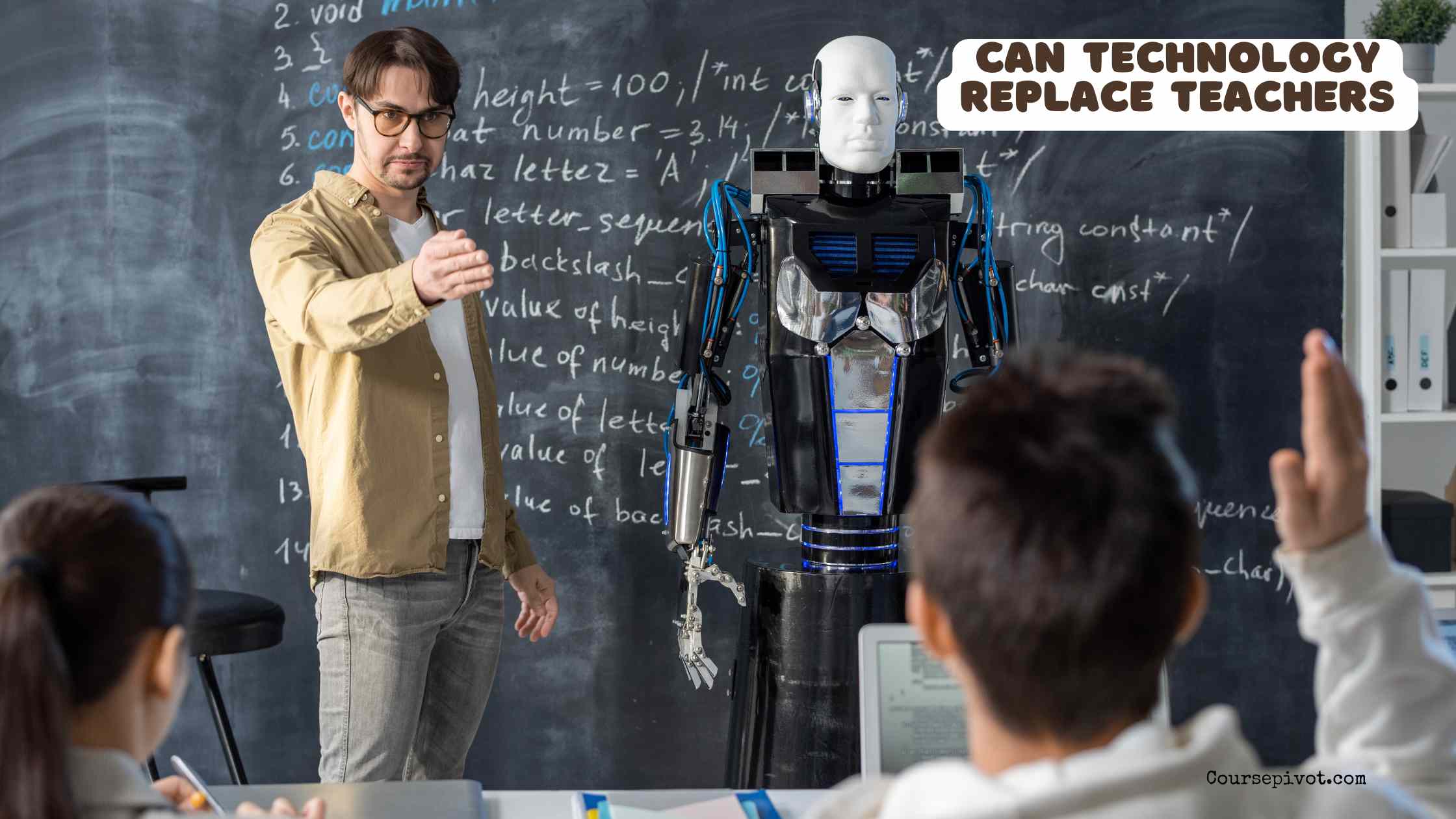
5 Reasons Technology Can Replace Teachers
The question “Can technology replace teachers, college professors, etc.?” sparks debate as digital tools reshape education. A 2024 EdTech report found that 70% of students use AI-driven platforms for learning, suggesting technology’s growing role. While human educators offer unique value, advancements like AI, virtual classrooms, and adaptive software can replicate or enhance certain teaching functions. This blog explores five reasons technology can replace teachers in specific contexts, addressing its potential to transform education while acknowledging limitations.
Table of Contents
Personalized Learning at Scale
Technology delivers tailored education through adaptive learning platforms like Khan Academy or AI tutors, adjusting content to individual student needs. A 2024 Journal of Educational Technology study showed that 65% of students using adaptive tools improved grades by 10-15%, outpacing traditional one-size-fits-all teaching.
For example, an AI platform can analyze a student’s math weaknesses and provide targeted exercises, unlike a professor managing a large class. This scalability ensures personalized feedback 24/7, reducing reliance on human instructors for routine instruction.
- Customizes Learning: Adapts to individual pace and skill level.
- Scales Effortlessly: Supports thousands simultaneously.
- Available Anytime: Offers constant access to resources.
How It Works: Platforms like Duolingo use algorithms to adjust lessons, ensuring students progress without needing a teacher’s constant input.
Access to Vast Educational Resources
Technology provides instant access to global resources—lectures, journals, and simulations—surpassing what a single teacher can offer. A 2023 Educause survey noted that 80% of college students use online databases like Google Scholar or MOOCs for learning, rivaling classroom content.
A student studying biology can watch MIT OpenCourseWare lectures or use virtual labs, bypassing the need for a professor’s direct instruction. This democratizes knowledge, making high-quality content available without a human intermediary.
- Expands Knowledge Base: Accesses global expertise.
- Reduces Barriers: No need for local teacher expertise.
- Engages Multimedia: Enhances learning with interactive tools.
How It Works: Use platforms like Coursera or YouTube Edu to explore expert-led courses on any subject, anytime.
Automated Assessment and Feedback
AI can grade assignments, quizzes, and essays with speed and consistency, reducing teacher workload. A 2024 Turnitin study found that 60% of automated grading systems matched or outperformed human accuracy for objective assessments, like math or multiple-choice tests.
For instance, AI tools like Gradescope can evaluate exams instantly, providing detailed feedback on errors. This frees teachers from repetitive tasks, potentially replacing them in assessment roles while maintaining fairness and precision.
- Saves Time: Grades faster than humans.
- Ensures Consistency: Reduces subjective bias.
- Provides Insights: Offers data on student performance.
How It Works: Students submit work to platforms like EdX, receiving instant scores and improvement tips without teacher intervention.
Cost-Effective Education Delivery
Technology reduces education costs by automating instruction and scaling access, making it a viable teacher substitute in resource-strapped settings. A 2023 World Bank report noted that online learning platforms cut delivery costs by 30-50% compared to traditional classrooms, benefiting colleges and students.
For example, a virtual course with AI tutors can educate thousands at a fraction of a professor’s salary. This affordability makes education accessible, especially in underserved areas, reducing dependence on human educators.
- Lowers Costs: Decreases need for salaried teachers.
- Scales Access: Reaches more students globally.
- Supports Budgets: Frees funds for other resources.
How It Works: Enroll in low-cost MOOCs like Udemy, which offer expert content without requiring live instructors.
24/7 Availability and Global Reach
Unlike teachers limited by schedules or location, technology offers round-the-clock learning and global connectivity. A 2024 UNESCO study found that 55% of students prefer online platforms for their flexibility, accessing lessons anytime, anywhere.
A student in a remote area can learn from AI-driven apps or virtual classrooms, like Zoom-based courses, without needing a local professor. This constant availability and reach make technology a powerful substitute for traditional teaching in many contexts.
- Breaks Time Barriers: Learn at any hour.
- Expands Access: Connects students globally.
- Supports Flexibility: Fits diverse schedules.
How It Works: Use apps like Quizlet or Grok for instant study support, available even at 2 a.m. before a test.
Why This Matters
Technology’s ability to replace teachers in certain roles—personalized learning, resource access, assessment, cost efficiency, and availability—reshapes education. With 70% of students relying on digital tools, per 2024 data, it can deliver scalable, accessible learning that rivals traditional methods. However, technology lacks the emotional intelligence and mentorship of human educators, limiting its full replacement potential. These reasons highlight where technology excels, offering students and institutions innovative options.
Practical Tips for Students Using Technology
Leveraging technology effectively can enhance learning without over-relying on it. Here are actionable strategies:
- Explore Adaptive Tools: Use platforms like Khan Academy to target weak areas, tracking progress with built-in analytics.
- Access Global Content: Browse MIT OpenCourseWare or Coursera for free courses, supplementing classroom learning.
- Use AI for Feedback: Submit practice work to Grammarly or Gradescope for instant critiques, refining skills independently.
- Balance Costs: Opt for low-cost platforms like Udemy, checking reviews to ensure quality content.
- Leverage Flexibility: Study during off-hours with apps like Quizlet, using flashcards or AI tutors for quick reviews.
| Strategy | Benefit | Resource/Example |
|---|---|---|
| Explore Adaptive Tools | Targets specific needs | Khan Academy, analytics |
| Access Global Content | Expands learning options | MIT OpenCourseWare, Coursera |
| Use AI for Feedback | Improves work quickly | Grammarly, Gradescope |
| Balance Costs | Saves money | Udemy, course reviews |
| Leverage Flexibility | Fits any schedule | Quizlet, AI tutors |
These steps maximize technology’s benefits while maintaining academic integrity. Online platforms, campus resources, or peer study groups can further support adoption. Start experimenting to enhance your learning efficiently.
Key Takeaways
Technology can replace teachers in delivering personalized learning, providing vast resources, automating assessments, cutting costs, and offering 24/7 global access, with 70% of students using such tools, per studies. These capabilities make education scalable and flexible, rivaling traditional teaching in specific contexts. Practical steps like using adaptive platforms, accessing global content, and leveraging AI feedback empower students to learn independently. While technology excels in efficiency and access, it complements rather than fully replaces human educators’ mentorship. By integrating these tools wisely, students can elevate their education and thrive academically.
Cite this article
You can copy and paste your preferred citation format below.
Martin, L. & Arquette, E.. (2025, August 21). 5 Reasons Technology Can Replace Teachers. Coursepivot.com. https://coursepivot.com/blog/5-clear-reasons-technology-can-replace-teachers/



